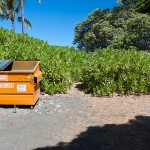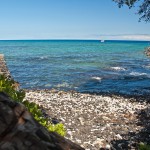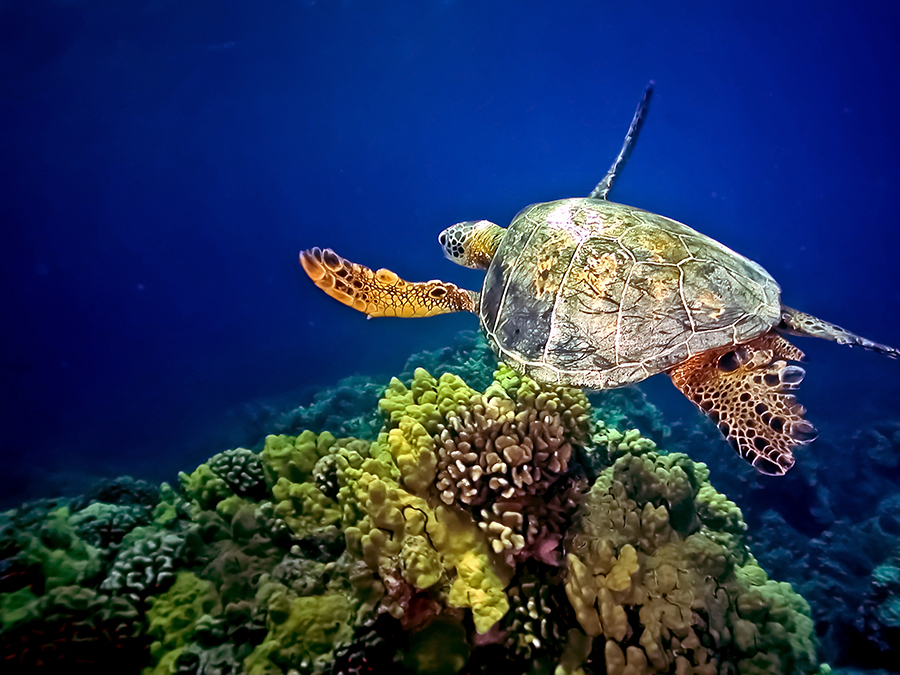 Hawaii is commonly referred to as the Big Island because its land mass is twice the size of all the other islands combined, and it’s also the island of my choice when I dive there. It’s also called the volcano island and the orchid island, but I call it a great place to snorkel or dive.
Hawaii is commonly referred to as the Big Island because its land mass is twice the size of all the other islands combined, and it’s also the island of my choice when I dive there. It’s also called the volcano island and the orchid island, but I call it a great place to snorkel or dive.
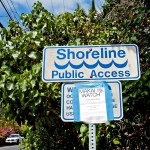 One of my favorite snorkel/diving areas is along Puako Beach Drive on the Kohala Coast, located a little less than 25 miles north of the Kailua-Kona airport off Hwy 19. There are ten public access points along Puako Beach Drive beginning with the boat launch ramp at the north end of the road and extending some 2 miles south to the end of the old road near house number 160. By the way, all houses on the beach side have even numbers, and the access points are all about a quarter of a mile apart.
One of my favorite snorkel/diving areas is along Puako Beach Drive on the Kohala Coast, located a little less than 25 miles north of the Kailua-Kona airport off Hwy 19. There are ten public access points along Puako Beach Drive beginning with the boat launch ramp at the north end of the road and extending some 2 miles south to the end of the old road near house number 160. By the way, all houses on the beach side have even numbers, and the access points are all about a quarter of a mile apart. 
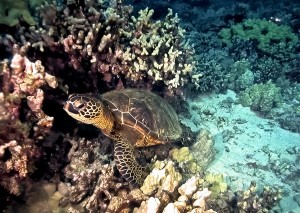 This area is known as the best place on the island to dive with turtles.
This area is known as the best place on the island to dive with turtles.
If you travel half a mile further up Hwy 19 you’ll find Hapuna Beach State Recreation Area, one of the nicest sand beach parks on the island and a great place to hang out after your dive. Three miles further north you’ll come to the small town of Kawaihae. There is a full service dive shop situated just across from the Kawaihae Harbor (Kohala Divers) where gear and tank rentals are reasonably priced. The harbor has boat launching facilities, and there’s a gas station, ice cream shop, pizza place, and mini-market near the dive shop.
The underwater structure along Puako Beach Drive is very similar at each access point. Most dive entries are over or between lava flows, so wear gloves. Entries here are relatively easy unless the surf is up, and since I dive between the months of May and September that’s usually not a problem. You’ll have to walk/snorkel anywhere from 25 to 50 yards offshore to reach the prime areas. At that point, there’s a drop off where an old lava flow ends. The top of this cliff-like structure is at a depth of around 10 feet, and it drops to
around 30 feet at its base. This structure curls up the entire length of the coast along Puako Beach Drive and features small lava tunnels, caves, crevasses, and niches where turtles and other critters love to hang out. Further seaward from this flow, the hard coral-covered bottom contours gently out to about 60 feet and then plunges down into deeper blue depths. My advice is to work the cliff starting into the current from your entry point so you’ll have an easy ride back at the end of your dive.
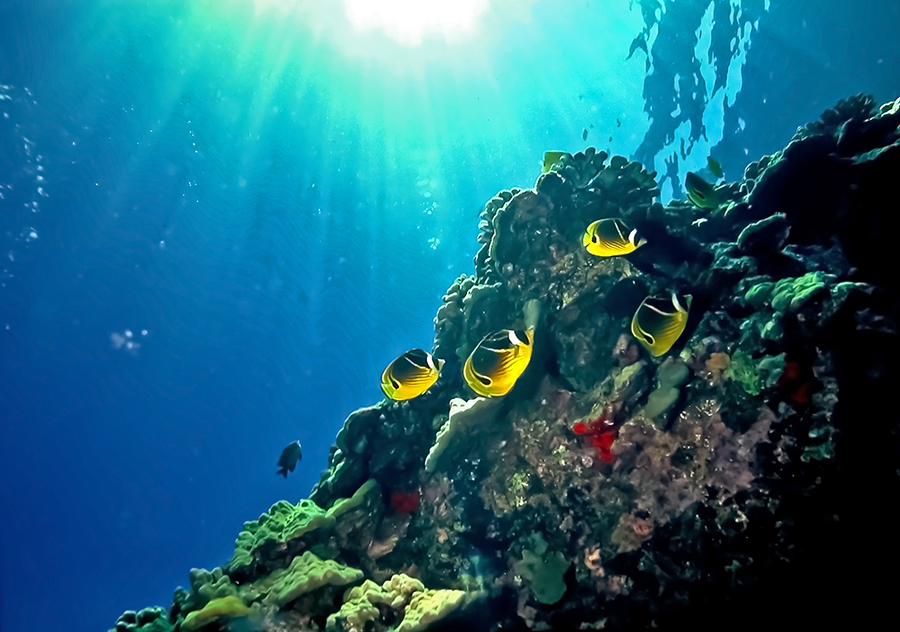 You can also snorkel any part of the shoreline along Puako Beach Drive and see lots of fish and turtles. During the day, turtles will come into shallow water to gnaw on the algae along the shore. Remember though, they’re fully protected, so look but don’t touch. Snorkeling along the edge of the reef is a rewarding experience for the whole family, too. The main thing to be aware of is the current, which picks up along the edge of that first drop off and has to be taken into account when you make your dive plan.
You can also snorkel any part of the shoreline along Puako Beach Drive and see lots of fish and turtles. During the day, turtles will come into shallow water to gnaw on the algae along the shore. Remember though, they’re fully protected, so look but don’t touch. Snorkeling along the edge of the reef is a rewarding experience for the whole family, too. The main thing to be aware of is the current, which picks up along the edge of that first drop off and has to be taken into account when you make your dive plan.
This area is also a good night dive spot. The cup coral blossoms, the frog fish come out to feed, and you can find parrot fish and trumpet fish resting in the coral. There’s also a myriad of interesting shells, nudibranchs, small shrimp, crabs and other fish to look at or photograph.
I’m dividing this blog into two parts so I can fully cover my favorite spots to dive. This first blog entry covers the northern part of the road, and my feelings about diving there:
Skip the boat ramp and the access point between Numbers 20 and 22. There’s a lot of fresh water runoff that sits like an oil slick on top of the salt water here, and the coral structure isn’t nearly as well formed as it is in other areas.
The access point between 38 and 40 is okay, but I like the one between 56 and 58 better. The best entry is to the left at this access point, and once you reach the drop off you’ll find yourself in a wide bay with several lava tunnels to explore. This is my second favorite dive along the road. Next up is the access point found just across from the church between 76 and 78. Good terrain there, too.
To be continued as part of our Hawaii series featured this month.

